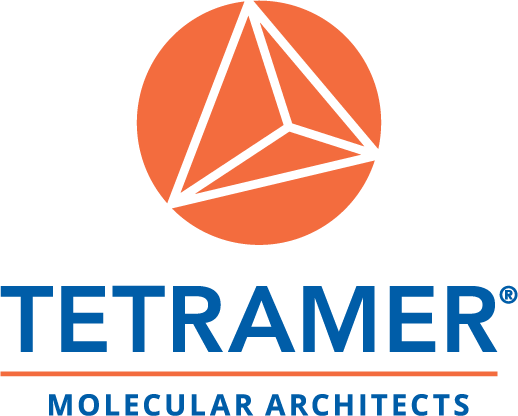Tetramer has been awarded a Phase I DOE Contract (DE-SC0019612) to develop high light-output, high yield plastic scintillator fibers.
The field of high-energy physics (HEP) continues to advance globally and provides scientists with a better understanding of fundamental interactions of matter and energy. Particle accelerator facilities such as the Large Hadron Collider enable researchers to isolate individual types of particles with various energies and study their composition and interactions with other matter. These measurements are enabled by scintillator materials which absorb energy from incident photons or high-energy particles and transform it into visible light. Current materials used for this work are either inorganic scintillating crystals which are expensive and environmentally unstable, or plastic scintillators which are not robust enough against radiation damage and don’t provide good discrimination between different types of high-energy radiation. Additionally, current plastic scintillators have light yields that are a fraction of that produced by inorganic crystals, but their ease of manufacture and moderate light yield are a good combination for many applications, resulting in a large global market.
This Phase I program at Tetramer is focused on the development of a new type of plastic scintillator that will provide better performance with regards to light yield and radiation characterization as well as improved manufacturability. Currently available materials in this application space cannot be extruded or injection molded which prevents its use for many applications such as fiber optic-based distributed sensing. This type of stand-off detection is particularly important for HEP measurements as electronics systems used to quantify and record radiation events need to be physically separated from the radiation events to prevent electromagnetic interference. The ability to create high aspect ratio scintillator fibers would enable a broad range of detection regimes across academic, industrial, governmental, and medical applications. Positron Emission Tomography (PET) scans with higher resolution and accuracy as well as large area portal radiation monitors at border crossings and shipyards are just two areas that could directly benefit from this novel material.


